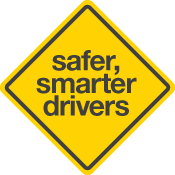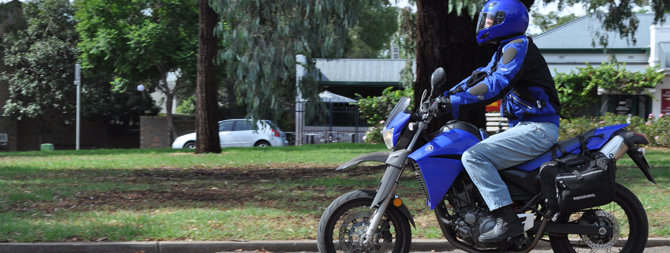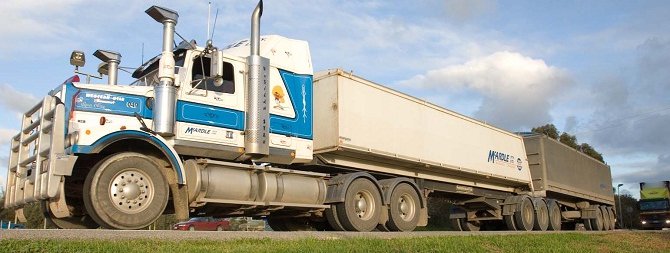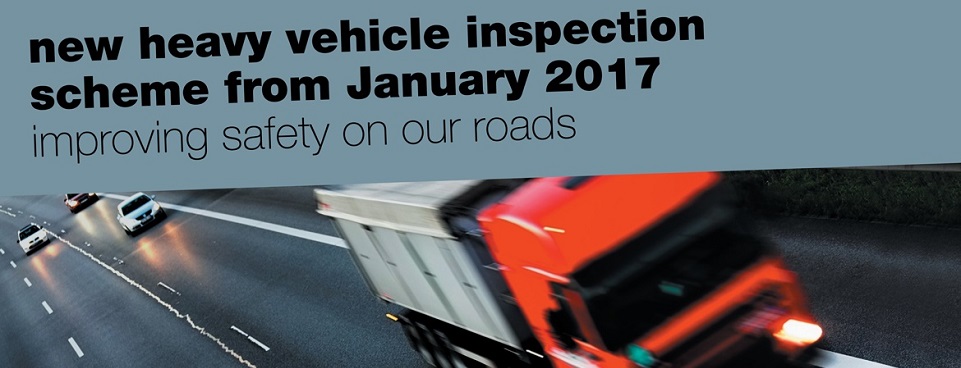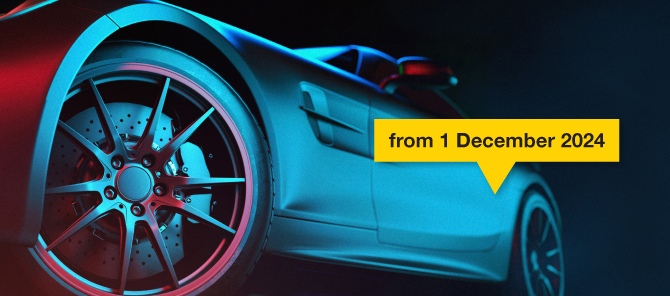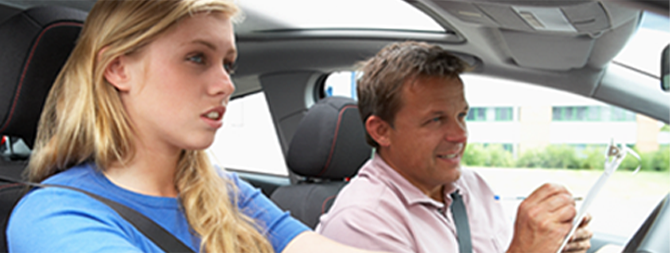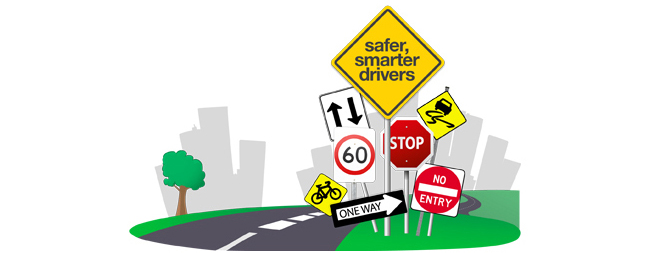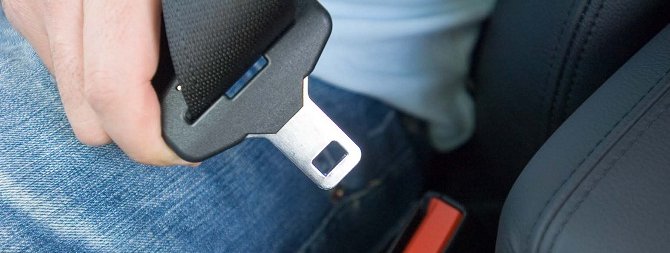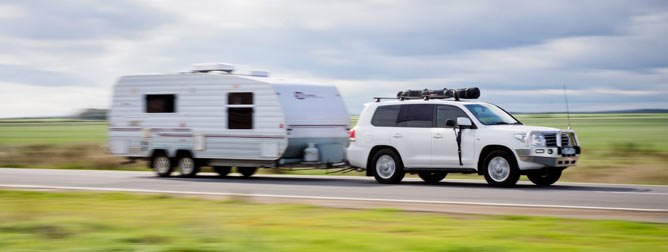My heavy vehicle licence
MC licence program

The Multi-Combination (MC) Licence Program is another way for Heavy Rigid (HR) and Heavy Combination (HC) licence holders to get an MC licence if they do not meet the minimum driving experience.
Entry criteria
Candidate driver
A candidate driver must be an employee of a business or organisation that uses MC vehicles in their daily operations. They must also need to drive MC vehicles for their employment.
A candidate driver must also meet these criteria:
- hold an unrestricted (full) HR or HC class South Australian licence
- not committed any serious road traffic offences within the last 2 years
- not had their driver's licence suspended or cancelled in the past 2 years due to an offence or court outcome.
Employer
An employer can nominate an employee as a candidate driver.
The employer who is planning to host an employee as a candidate driver must:
- have a record of compliance with heavy vehicle regulation and standards
- provide a 5-year compliance declaration as per the current requirements for the National Heavy Vehicle Accreditation Scheme
- have been operating for 5 years or more
- have a current and registered Australian Business Number (ABN) or Australian Company Number (ACN)
- provide an Australian Securities and Investments Commission (ASIC) company extract to verify all directors
- have an average MC vehicle fleet age of less than 5 years
- undertake a regular service and maintenance program for their vehicles
- have a Safety Management System
- implement a process for inducting new employees
- employ qualified staff who can act as a qualified supervising driver for the candidate driver.
How to get an MC Licence
Step 1: Apply for the MC Licence Program
Apply for an MC class learner’s permit at a Service SA Centre.
Complete the ‘Application to participate in the MC Licence Program’ form. The candidate driver and their employer must complete the form.
The candidate driver will receive an MC learner's permit if they meet the entry criteria. The MC learner’s permit will:
- be valid for up to 12 months
- state that the candidate driver is participating in the MC Licence Program
- not permit the candidate driver to drive an MC vehicle until they have completed the MC competency-based training course with an approved South Australian registered training organisation (RTO).
Step 2: Take the MC competency-based training course
The candidate driver must complete the course with an approved South Australian RTO.
The candidate driver will not take the final driving assessment at this stage. Before taking the final driving assessment, they will need to complete:
- all required supervised driving hours
- all required learning components.
Note: If a candidate driver only holds an HR licence, they must complete all HC competencies with an approved South Australian RTO. They must do this before taking the MC competency-based training course.
Step 3: Record hours with a qualified supervising driver
After completing the MC competency-based training course, the candidate driver can start to learn to drive an MC vehicle. However, they can only do so under learner’s permit conditions.
The candidate driver needs to complete the following with a qualified supervising driver who is provided by the employer:
- record a set number of supervised driving hours
- the learning components.
MC Companion and learning components
The candidate driver must complete The MC Companion (PDF, 2.7 MB).
The candidate driver must complete and record the following supervised driving hours:
- at least 50 hours if they are an HC licence holder
- at least 60 hours if they are an HR licence holder.
The minimum driving hours include the learning components. The candidate driver must conduct all logged driving with a qualified supervising driver.
For both HR and HC licence holders, there are 13 standard learning components that need to be performed. However, HR licence holders need to perform 5 more learning components compared to HC licence holders.
The MC Companion outlines which learning components:
- can be performed on the same day
- cannot be performed on the same day.
The candidate driver must perform learning component(s) in the MC Companion with at least one day’s break between them (that is, not on consecutive days).
You can download and print additional logbook pages (PDF, 120.9 KB).
Criteria for a qualified supervising driver
A qualified supervising driver must:
- have an unconditional licence that allows them to drive an MC vehicle
- have held an MC licence for a continuous period of 2 years
- not have their licence be subject to a Good Behaviour Option.
For the purposes of the program, the qualified supervising driver must also demonstrate:
- at least 5 years of experience on an MC licence
- at least 2 years of employment with the host business (the employer)
- a good record regarding workplace and traffic incidents
- knowledge and expertise in all relevant work tasks
- the ability to share knowledge in stages (including moving through learning components based on the driver’s skill progression)
- the ability to perform a mentoring role
- good communication skills.
A good driving history means you have not committed:
- any serious traffic offences (under the Road Traffic Act 1961 and the Criminal Law Consolidation Act 1935) which has resulted in an instant loss of licence or court disqualification in the preceding 2 years
- any of the following offences:
- Failing to stop, give assistance and present to police where a person has been injured or killed.
- Aggravated careless driving, reckless or dangerous driving.
- Cause death or harm by use of a vehicle.
- Leaving the accident scene after causing harm or death by careless use of a vehicle.
- Dangerous driving to escape a police pursuit.
- Extreme speed.
If the qualified supervising driver does not meet the criteria:
- all related entries in the MC Companion will be invalid
- the MC licence will be void (if it was issued)
- the candidate driver will need to surrender their MC licence
- the candidate driver will need to apply for the MC learner’s permit to be reissued.
The qualified supervising driver must accompany the candidate driver for all MC driving hours. When doing so, the qualified supervising driver needs to:
- assist the candidate driver on operating the MC vehicle safely and efficiently
- assist the candidate driver on applying the road rules correctly
- always sit next to the candidate driver while the candidate driver is driving and/or has parked an MC vehicle
- ensure the MC vehicle is registered and has undertaken a basic pre-start roadworthy check.
Step 4: Confirm driving performance and competence
The qualified supervising driver should report on the candidate’s progress:
- at least once a week
- to their employer’s managing director, or equivalent.
The qualified supervising driver and the identified managing director, or equivalent, should discuss whether the candidate driver is competent and ready to take the final driving assessment.
Step 5: Complete final assessment and get MC Licence
Take the final driving assessment
The candidate driver can take the final driving assessment with an authorised examiner once they have completed:
- the minimum number of recorded supervised driving hours
- all the learning components, which have been signed off by the qualified supervising driver.
The candidate driver must complete the MC Companion before taking the final driving assessment.
The employer should book the final driving assessment with an authorised examiner through a South Australian approved RTO.
The Department for Transport and Infrastructure may audit the practical driving test.
Get a certificate of competency
The candidate driver will receive a certificate of competency when they pass the final driving assessment.
Take the MC Companion and certificate of competency to Service SA
The candidate driver must take their completed MC Companion and the certificate of competency to a Service SA centre.
Service SA will check whether the candidate driver has completed:
- the minimum number of recorded supervising driving hours
- the learning components (that have been signed off by the qualified supervising driver)
- the certificate of competency.
Service SA will not issue an MC licence if the candidate driver has not completed these requirements.
Service SA will not accept the certificate of competency if the driving test was taken before completing the requirements outlined in the MC Companion. The candidate driver may have to be reassessed before progressing to an MC licence. They also may receive an MC licence on the initial certificate of competency after meeting the minimum driving experience requirements.
If accepted, Service SA will issue the candidate driver an MC licence. The licence may be subject to a transmission condition. This depends on the transmission of the vehicle used in the final practical driving assessment.
A fee will be payable to issue the licence.
Step 6: Post licence requirements
Once the candidate driver has an MC class licence, there are a few requirements going forward.
Requirements for the qualified supervising driver
- Maintain regular contact with the newly licensed driver to provide ongoing support and advice.
- Visit the newly licensed driver for a shift or trip at a random time within 2 weeks after obtaining an MC licence.
Requirements for the managing director, or equivalent
- Discuss the newly licensed driver’s work performance on a regular basis.
- Ensure that more training is provided to the newly licensed driver if any issues arise.



